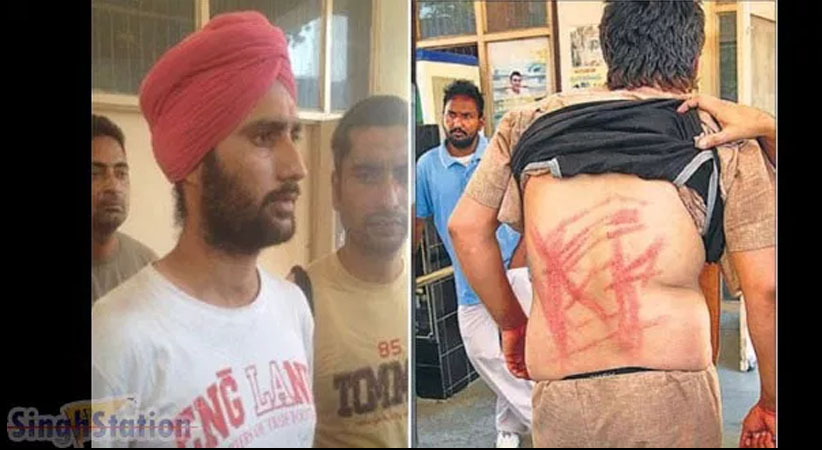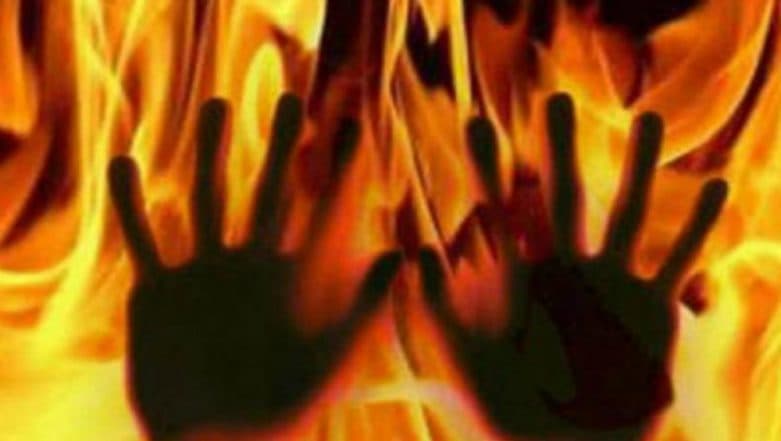NEWS & MEDIA
NEWS & MEDIA
India - New Delhi | 2015-10-23Violence against Dalits on the Rise

- 47,064 cases of crimes against Dalits were registered last year, up from 39,408 in 2013 and 33,655 in 2012.
- According to NCRB 2014 data, the chargesheeting rate in crimes committed against Dalits is 92.3%, while the conviction rate is 28.8%.
- Crime against Dalits increased by 19% from 2013 to 2014.
- It is very difficult to get the police to cooperate with us. We often have to resort to protests and dharnas to even get a chargesheet filed. Sometimes, the victim is not aware that there is a special act for crimes committed against SC/STs.
New Delhi: When a two-year-old boy and his 11-month-old sister were burned to death in Sunped village of Faridabad district in Haryana on Tuesday, it was the latest tragedy in a rising tide of caste violence, often aided by police complicity.
Vaibhav and Divya, and their parents Jitendra Kumar and Rekha, were asleep when their house was torched at around 2.00am. Rekha was hospitalized with 70% burns.
Kumar blamed a family with which he has had a long-standing feud. But what seemed to be a case of family enmity quickly took on darker undertones of a caste conflict—the victims are Dalits and the suspects upper-caste Thakurs.

Protesters block a road in Faridabad after two Dalit children were burned alive in Sunped village
Whatever the merits of this particular case, violence against the Dalit community has increased over the past few years. According to National Crime Records Bureau (NCRB) data, 47,064 cases of crimes against Dalits were registered last year, up from 39,408 in 2013 and 33,655 in 2012.
Acts of violence have risen not just in terms of numbers, but also in intensity. In 2010, 70-year-old Tara Chand and his physically challenged daughter Suman were burnt to death when their house was burned down in Mirchpur, Haryana, along with 18 other Dalit homes, by members of the Jat community
Fifteen people were convicted and 82 acquitted by a sessions court the following year.
“When it comes to caste violence, Haryana has a dismal record. There has been a 271% increase in violence against Dalits over the past decade,” said Ashok Bharti, national convener of the National Confederation of Dalit Organizations (NACDOR).
But it’s not just Haryana. Last year, three members of a Jadhav family were brutally murdered in Javkhade Khalsa village of Ahmednagar district in Maharashtra.
Jayashree, her husband Sanjay and their son Sunil were reportedly hacked to death and their body parts scattered.
The incident evoked memories of the infamous Kherlanji massacre of 2006 when four members belonging to the Mahar community were killed in Maharashtra. The women of the family were reportedly paraded naked before being killed. The act was carried out by members of the Kunbi caste, classified as an Other Backward Class, in retaliation for the victim family opposing the acquisition of their land.
A Central Bureau of Investigation (CBI) inquiry was eventually conducted, and in 2008, six people were awarded the death sentence. In 2010, the Nagpur high court commuted the death penalties to life imprisonment.
“A Dalit boy’s wrist was chopped off because he was wearing a watch; another was killed as he had a song on (social reformer) B.R. Ambedkar as his ringtone. I can reel off incidents like this without even consulting news reports,” said Rajeshwar Paswan, Bihar state coordinator for the National Campaign on Dalit Human Rights, a non-governmental organization.
From increasing economic independence of the Dalit community to a re-assertion of caste identity, several reasons have contributed to the cycle of violence.
“In Haryana and Punjab, the Dalit is no longer integrated in the new agrarian economy. From mechanization to migrant labourers to voluntary distancing, there are several reasons which have contributed to this,” said S.S. Jodhka, a professor at Jawaharlal Nehru University’s Centre for the Study of Social Systems.
The Dalits are no longer dependent on upper castes for a livelihood; in fact, they often compete with them, and even do better.
Legislation against the caste system was introduced in India as early as 1850 under the Caste Disabilities Removal Act. After independence, it was only in 1990 that a law to shield the Dalits, the Scheduled Castes and Scheduled Tribes (Prevention of Atrocities) Act, 1989, came into effect.
In July last year, minister of social justice and empowerment T.C. Gehlot introduced the Scheduled Caste and Scheduled Tribes (Prevention of Atrocities) Amendment Bill 2014 in the Lok Sabha.
The amendment seeks to introduce new offences, including garlanding with footwear, compelling to dispose of or carry human or animal carcasses or do manual scavenging, and abusing Scheduled Castes/Scheduled Tribes by caste name in public. It adds a chapter on the rights of victims and witnesses. The bill also seeks the establishment of a special court at the district level to try offences mentioned in the bill.
“Dalits have been the fastest to change and adapt in our society, but the others have found traditional roles hard to let go of. Everything from traditional land holdings to personal relationships are changing. In such a scenario, the Atrocities Act does serve as a deterrent, but unless the police machinery applies it forcefully, the implementation remains a problem,” says Bharti.
According to NCRB 2014 data, the chargesheeting rate in crimes committed against Dalits is 92.3%, while the conviction rate is 28.8%.
Crime against Dalits increased by 19% from 2013 to 2014.
“It is very difficult to get the police to cooperate with us. We often have to resort to protests and dharnas to even get a chargesheet filed. Sometimes, the victim is not aware that there is a special act for crimes committed against SC/STs,” says Paswan.
“There is a need to make the political elite including the police establishment answerable to what happens. The police force is mostly made up of upper caste members and as such they become resources with the state system. Dalit empowerment results in re-assertion of caste identity from above, a sort of ‘we are the bosses’ feeling,” says Jodhka.
Live Mint
Link to Source: http://www.livemint.com/Politics/Zj4UG1k9FOOeXQUQCtvLoK/Violence-against-Dalits-on-the-rise.html





